The moment I pulled up on this small pond at Bear River Migratory Bird Refuge last Friday I knew there’d be some opportunities for interesting behavioral shots. There were small groups of American Avocets and Black-necked Stilts that were excitedly chirping away and flying at each other in typical springtime behavior for these mixed flocks.
The lighting was a little harsh for proper exposure on these largely black and white birds but of course I documented the behaviors anyway.
In avocets, nest sites are selected jointly by both birds of the pair and these two were doing their typical ritualized nest searching. Both birds point their bills at the potential site. Early on in the process the male takes the lead in the search while the female watches but later on she joins in as we see here.
The birds were in clusters on the pond and occasionally one of the avocets would aggressively fly at other birds in another group. This avocet had taken off to do just that.
Mating involves a complex sequence of displays and is initiated by the female. Here she assumes the “solicitation posture” where she extends her neck far forward and lays her bill on or near the surface of the water while holding her tail up.
As she holds this posture the male begins “sexual preening” where he walks repeatedly (up to 16 times) to both sides of the female as he rigorously preens.
This part of the display can last for up to three minutes and I always get a little tense while it’s occurring because many things can interrupt this behavior and “break the mood” so that I don’t get the shots of the rest of the process. Other birds can fly in or a vehicle drive by on the road and it’s all over until next time.
But this time nothing happened to interrupt the behavior and the male mounted the female.
As he did so I was disappointed that the female turned away from me. Here the “cloacal kiss” is just about to occur. I thought it was interesting to see how far the female must lean forward to keep both birds balanced with the male in this rear position on her back.
Immediately after copulation the birds stand side to side and cross bills. Every time I’ve seen this part of the ritual the male also has his wing draped over the back of the female, as you see here. It’s difficult for me not to refer to this as an “endearing” gesture.
As they turned their backs to me once again the male still has his right wing over the back of the female in a seemingly protective and loving way…
and then they stroll off into the sunset in lock-step (notice the almost exact position and angle of the legs).
Well, there really wasn’t a sunset. Couldn’t resist…
Ron


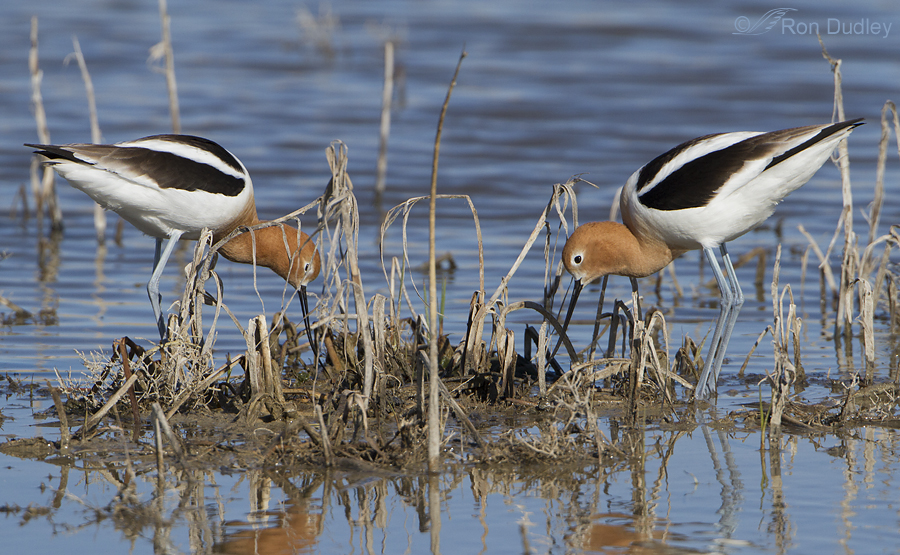

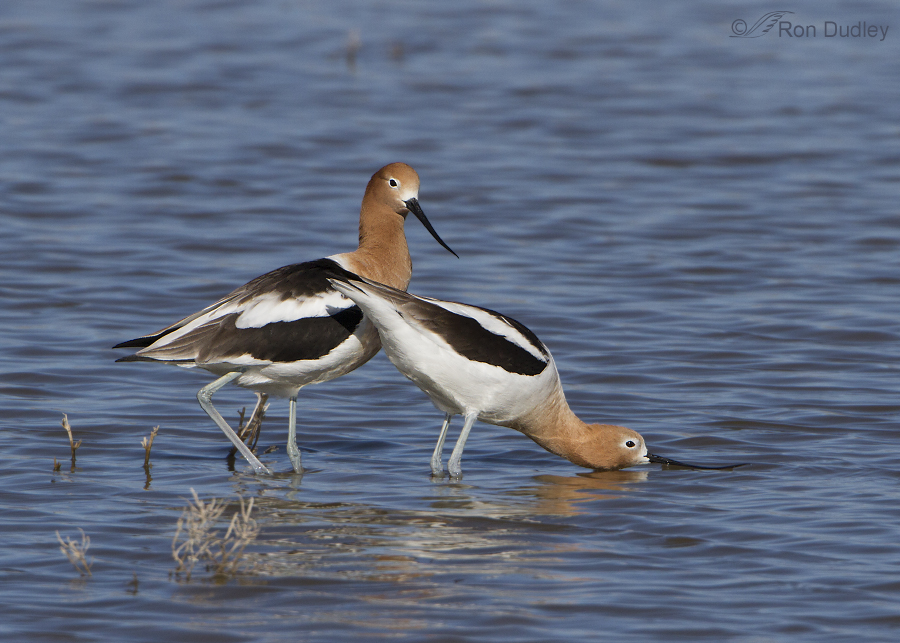

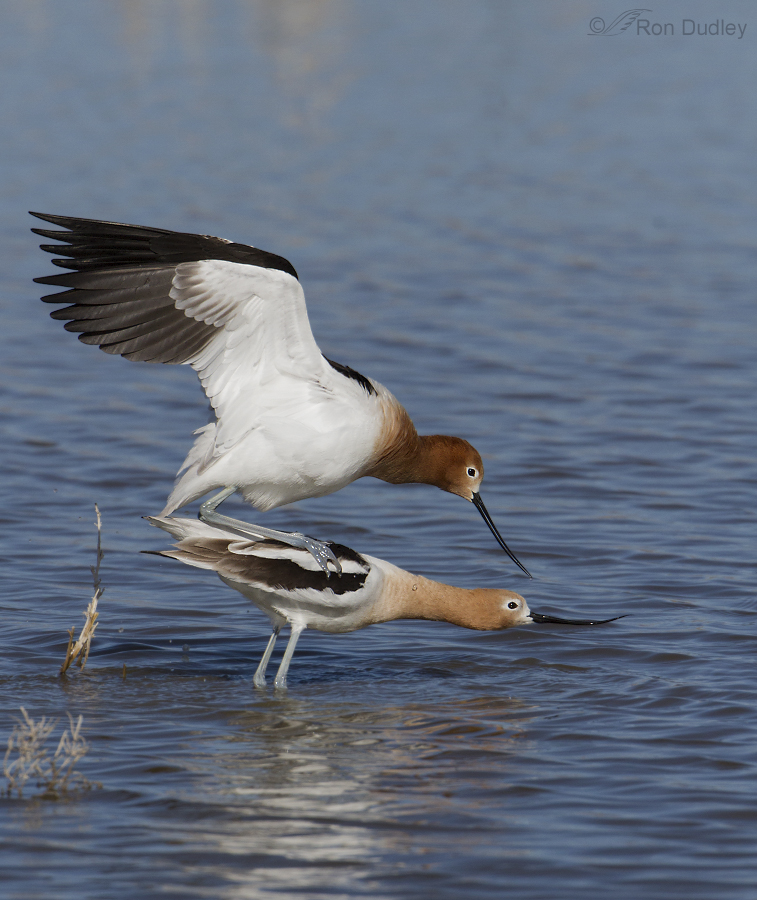
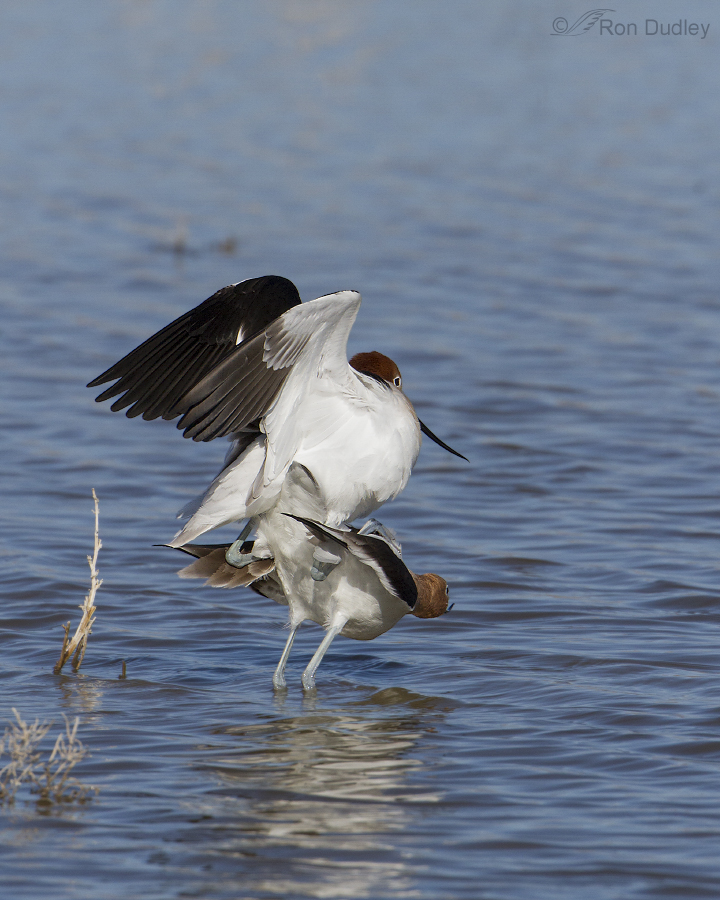
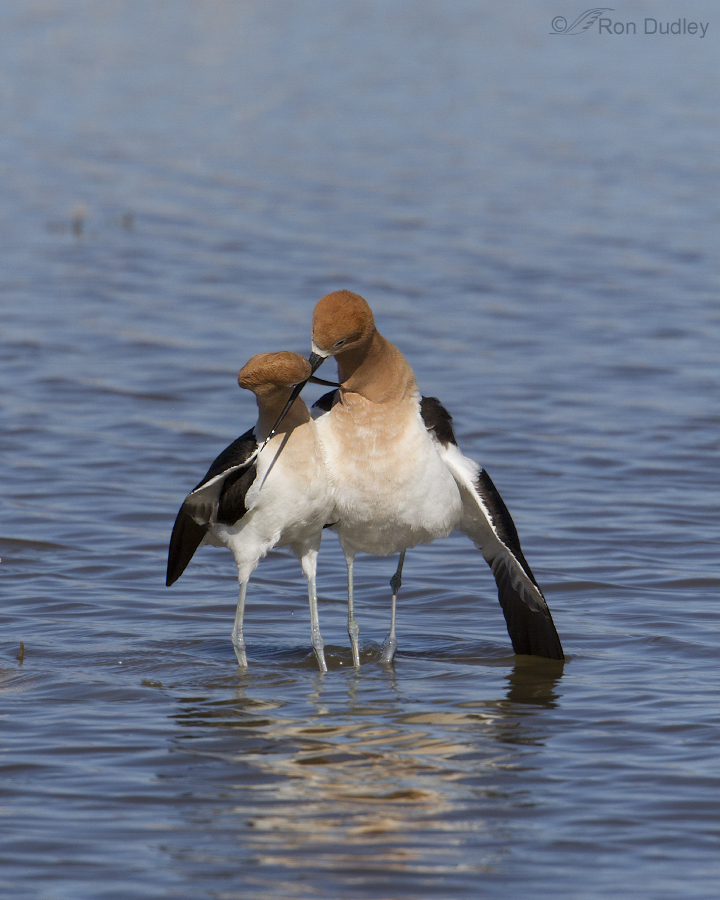
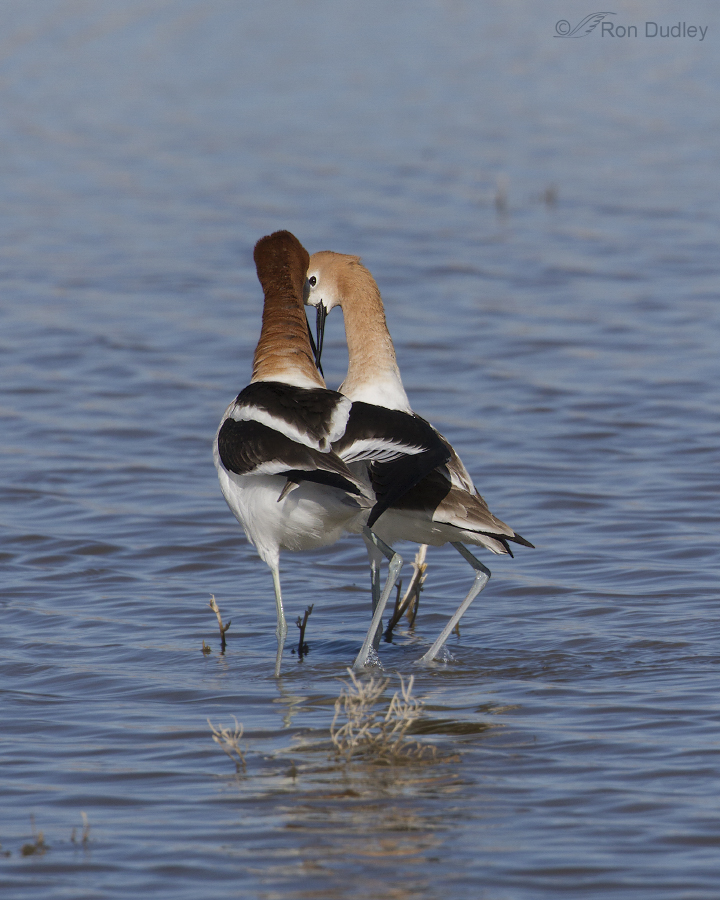
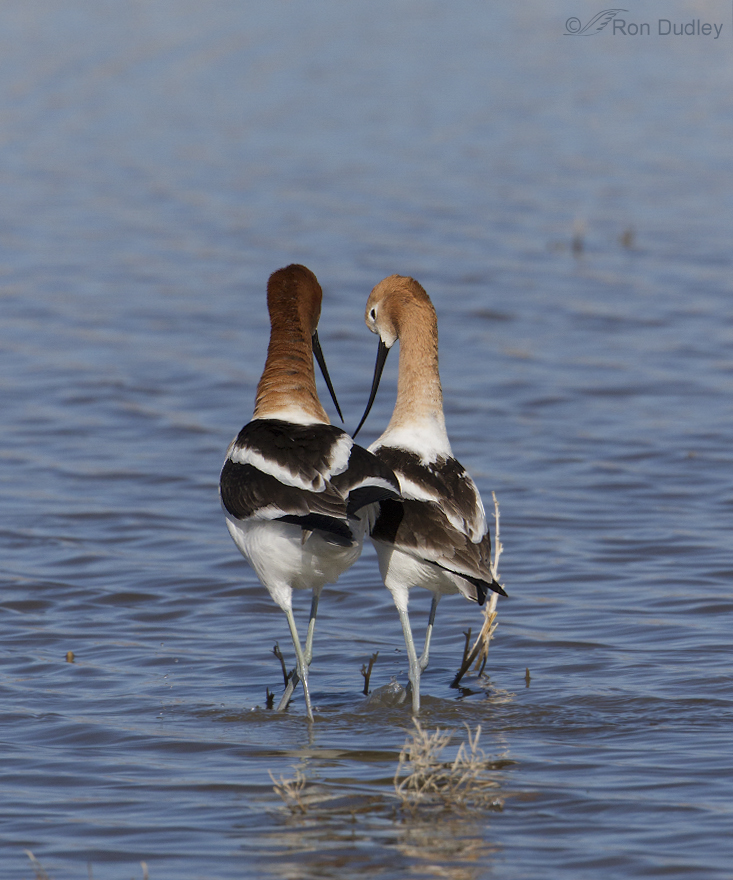
What a beautiful series Ron. We will be up that way in July and am hoping lots of birds will still be around to photograph. Last time we visited the stilts and avocets were still nesting which made for some good shots. I was amazed how small and shallow their nests were and how some were in the middle of a small dry mound in the water. They looked waterlogged, making me wonder if the eggs were dry enough or warm enough and would they actually hatch. We did see one black necked stilt with 1 little fluffy baby. So cute running around the marsh looking for food. Thanks for sharing this experience.
So beautiful, and so touching! Thank you for sharing! I have a picture of me with a barred owl that I had rescued and was going to release after it had been rehabbed. I felt something on my head as my friend took the picture, but I didn’t know what until later. The owl had put its wing over my head. Whether accidental or not, it was a moment I’ll never forget.
I’ll bet you won’t, Leisa and I can understand why.
Anthromorphism or not, I find myself unable to describe it as anything but endearing. And, given the number of birds that mate for life, I believe that affection (for want of a better word) does come into play. Even when one member of a pair is killed many of these birds will not form another partnership, which doesn’t seem sound from an evolutionary only perspective.
Another heart-warming and beautiful series – thank you.
Thanks very much, Elephant’s Child. You reacted to this about the same way I do every time I see this ritual.
Me, too. I’ve stopped using the word anthropomorphism, not because it doesn’t have validity, but because historically, it’s been used to deprive nonhuman animals of their rightful qualities and emotional lives. Of course, we don’t know what they really think or feel. But I like to err on the side of assuming they know much more than what we an ascribe to them through our limited tools of study. I absolutely love this series, Ron, and the wing over her back is something I’ve never seen with Avocets! Touching and lovely.
Hey Ron, you really nailed this one.
Thanks a lot, Maria.
All of these are great photos of this event. For those who haven’t seen this in film, You Tube this love dance to see how fast this mating moment takes place . Evolution at its best..
But ,Ron ,your photo of the dance afterwards really is great. The “Endearing Gesture”, a front on shot with the left wing draging in the water says it all .. Love is work ,but its worth it.
Thanks, Eldridge. So many of the poses these birds assume during the process remind us of ourselves so much that I find it impossible to resist anthropomorphism – thus some of the terminology that both you and I used here. I looked for the clip but don’t think I found the one you were referring to.
This is great, Ron. I find bird behaviours including mating fascinating but especially amongst the American Avocets.
Glad you enjoyed it, Jane.
Thank you for documenting so brightly those behaviors that we don’t see usually. You have to be there at the good time and at the good moment. The 3 last photos are priceless. Great job !
Yes, Laval – timing is everything to be able to see these behaviors.
After recently watching the “wham bam thank you ma’am” style of the American Kestrel couple in our neighbor’s palm tree, these photos are a refreshing change. Absolutely beautiful series of photos!
Your comment made me smile, Susan. I know what you mean about kestrels…
Your amazing photos alone would be wonderful but with your explanation of the behavior this series will stay with me for a long time.
Thanks again for your knowledge and skill
I’m really glad you enjoy the narrative, Diana.
What a fabulous series of shots of a beautiful bird Ron!
Thank you, Chuck.
WOW!! Great shots Ron! Fun, Fun, Fun. Reminds me of when I was in North Dakota at one of their nesting grounds, but then I only had a Retina 3C! Wonderful clear, tack on focus shots, much appreciated.
Thanks, Dick. There were thousands of avocets in large groups along the causeway this morning. Quite a sight to see just as the sun was rising over the mountains.